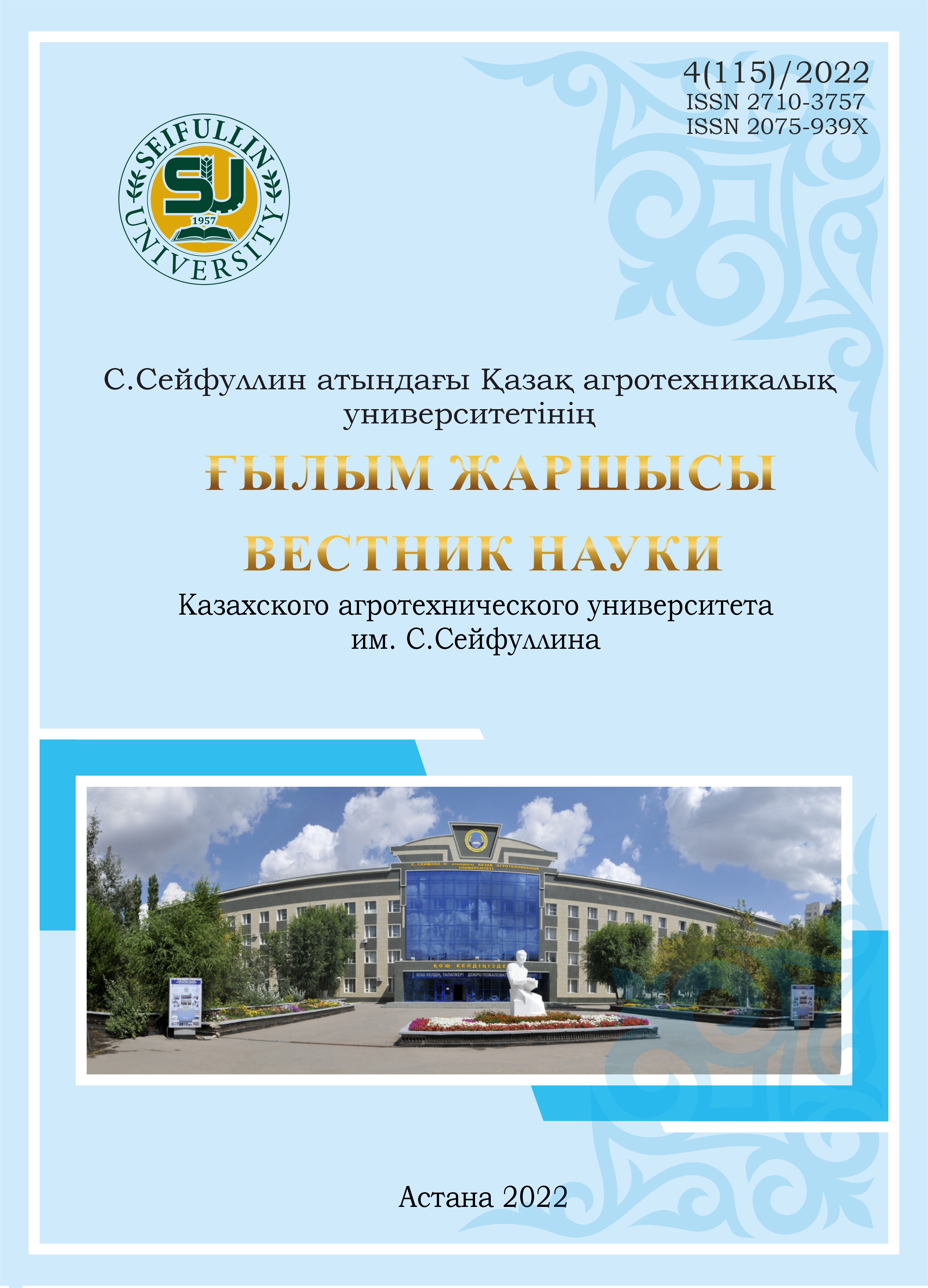SPECIES COMPOSITION OF EIMERIA IN INTESTINAL BIOCENOSIS OF SHEEP IN FARMS OF AKMOLA REGION
Central Kazakhstan, sheep, Eimeria parva; E. crandallis; E.ovinoidalis; E. intricata; E. ahsata; prevalence; infection intensity.
DOI:
https://doi.org/10.51452/kazatu.2022.4.1263Keywords:
Central Kazakhstan, sheep, Eimeria parva; E. crandallis; E.ovinoidalis; E. intricata; E. ahsata; prevalence; infection intensity.Abstract
In conditions of Central Kazakhstan, intestinal coccidiosis (eimeriosis) of small ruminants has not been practically studied, therefore, determination of Eimeria species and assessment of their epidemiological role in sheep farms in this region is an urgent problem to be addressed. The article presents the results of coproscopic studies using Fulleborn and McMaster methods of 214 different aged sheep in three farms of the Akmola region. As a result, five species of Eimeria were here identified: E. ahsata (Honess, 1942) with an average prevalence of 64%, E. intricata (Spiegel, 1925) – 18.2%, E.ovinoidalis (McDougald,1979) – 56.5%, E. crandallis (Honess, 1942) – 39.7%, and E. parva (Kotlan, Mocsy and Vajda, 1929) – 16.6%. The most infected age group with coccidia were sheep under one year of age in summer months with high Eimeria prevalence of E. crandallis 80.7% with an infestation intensity 1550 ±38 oocysts/g. In the intestinal biocenosis, coccidia mainly occurred as mono or mixed infection consisting of two or three species, including E. crandallis + E. ahsata + E. parva with prevalences of 32.7%. The obtained data suggest that it is necessary to conduct more comprehensive epidemiological studies of eimeriids among small ruminants in the region in order to propose rational control measures in accordance with the population dynamics of these enteropathogens.

